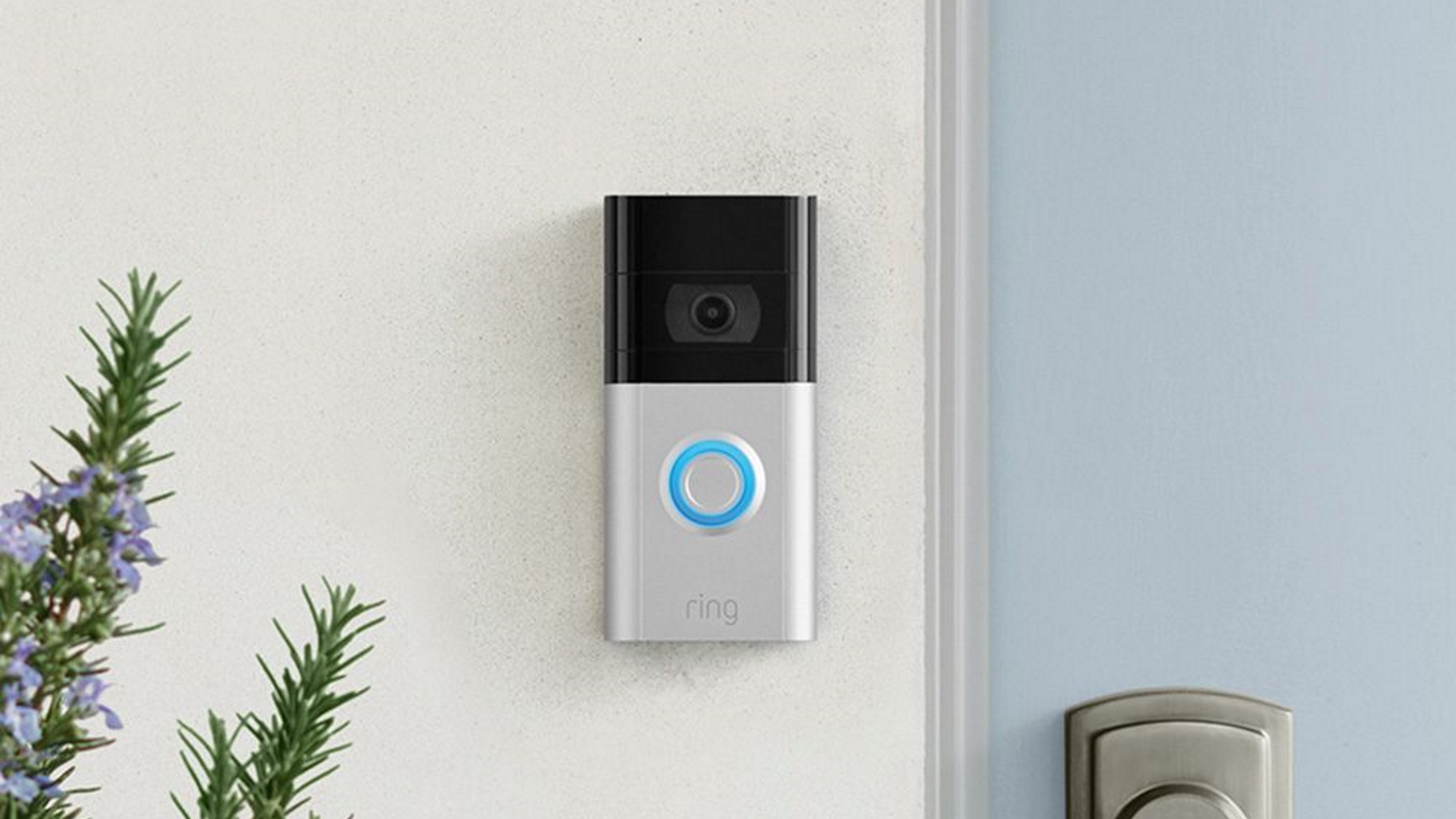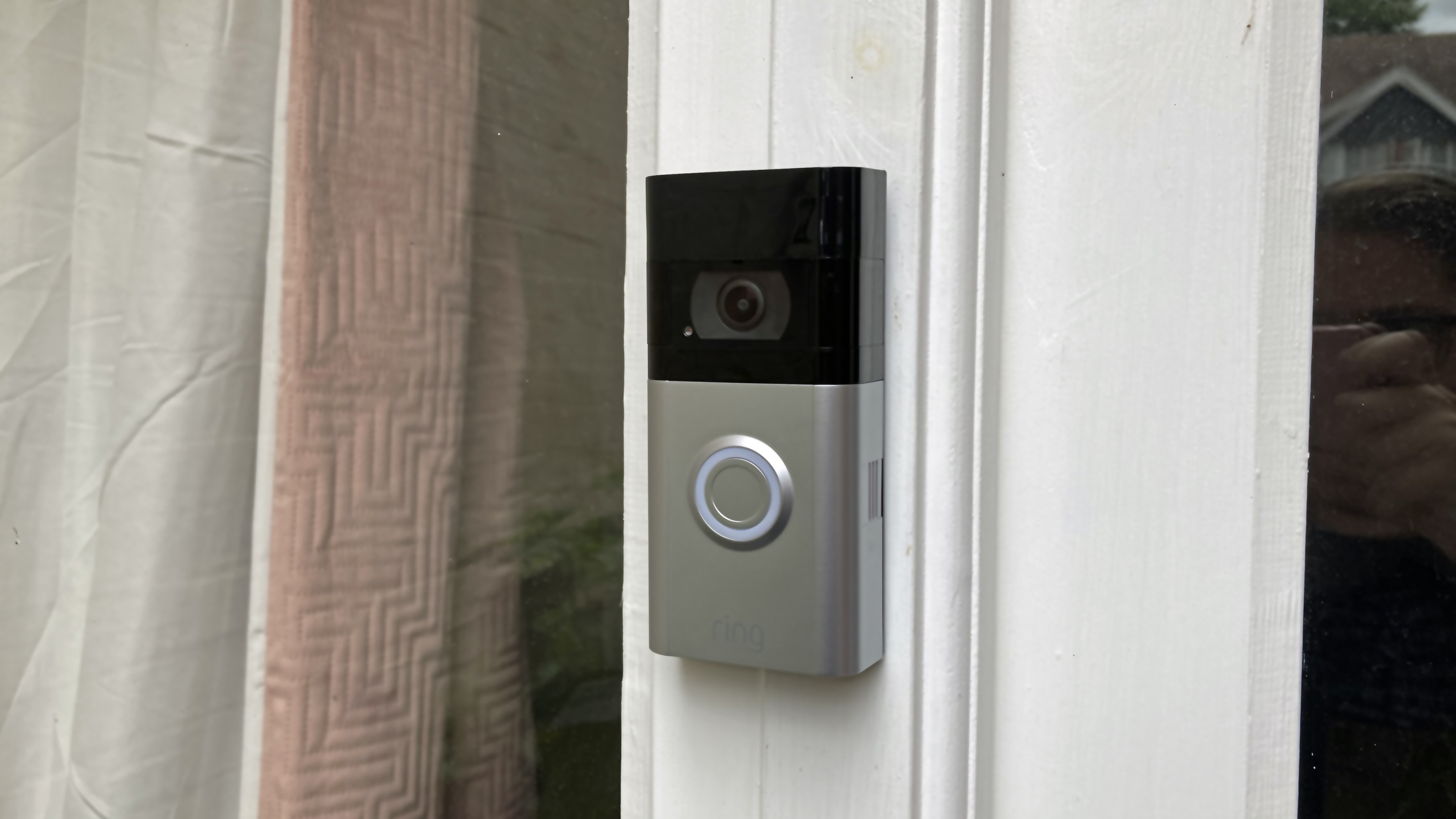Ring Video Doorbell 3 review: a solid upgrade drowned out by competition?
We test the Ring Video Doorbell 3 to see if it can stand out against older and newer models from the brand

The Ring Video Doorbell 3 is now the middle child of the brand's original models, and that makes it difficult to be distinctive. With the reliability of a Ring product and a few additional features over the 2nd Gen doorbell, it's recommended for those who want an upgraded experience at a slightly lower price than the Ring Doorbell 4.
-
+
Classic, solid design
-
+
Upgraded WiFi connection
-
+
Removable battery
-
+
Great app
-
-
No pre-roll feature
-
-
One of the bulkier wireless doorbells
Livingetc knows design.
Released in 2020, the Ring Video Doorbell 3 now sits between the Ring (2nd Gen) and Ring 4 doorbells in the lineup, which the brand has expanded over the years to also include premium Pro models and the more affordable Ring Doorbell Wired.
As a result, the company's range of smart doorbells has become somewhat unruly over the years, and as we have already tested the excellent bridge model - the Ring Video Doorbell 3 Plus - we wanted to see if the Ring Doorbell 3 could hold its own.
So what makes it stand out from the pack, and is it worth opting for this 3rd Generation model when there are cheaper or more advanced options? Read on to see what we thought and who we think the device will suit, and head over to our guide to the best wireless doorbells for more top picks.
Ring Video Doorbell 3: Key specs
- Power: Battery, wired
- Resolution: 1080p
- Works with: Alexa, Ring
- Storage: Cloud
- Dimensions: H5.1 x W2.4 x D1.1in

Ring Video Doorbell 3: Design
The appearance of the Ring Video Doorbell 3 is pretty much exactly like its predecessors, with the now iconic silver and black block that's hard to miss on the front of the house. The doorbell doesn't come with any swappable face plates, though, so you're stuck with the original silver (or Satin Nickel, as Ring calls it).
The design still works well despite other brands releasing wireless doorbells with less bulk, and it's also in its build that the Ring 3 has an advantage over the previous 2nd Gen model. When it comes time to recharge, you don't need to remove the entire device from the wall. There is a quick release button under the faceplate which means you can remove just the battery pack.
Of course, the wireless design in and of itself makes this a good choice for people who don't have existing wiring and don't want to call in a professional. All you need is a few screws and an internet connection.

Living a life where package deliveries are part of the daily job, Caroline is keen to tell anyone who'll listen just how much of a life-saver they can be. Since joining Livingetc as the smart home editor at the start of 2021, she has tested multiple models across different brands, and is able to compare and contrast them based on how easy they are to install (as both a renter and a homeowner) and how much they help her field visitors and couriers. The Ring Video Doorbell 3 was kindly provided for review purposes, and was tested on the rear door of her garden flat, which gets a lot of passers-by to really test the motion sensor.
Ring Video Doorbell 3: Set-up
Like other models, the Ring Video Doorbell box has everything you need to get started. This includes a mounting plate, screws and a screwdriver, a USB-C charging cable, and several security stickers to place outside your home. If you don't already have the Ring app and an account, you should do this first.
The Livingetc newsletters are your inside source for what’s shaping interiors now - and what’s next. Discover trend forecasts, smart style ideas, and curated shopping inspiration that brings design to life. Subscribe today and stay ahead of the curve.
Once you've signed up, you should charge the battery using the cable provided. The light should turn green when it's ready. Then, reinsert the battery into the doorbell.
You're then ready to pair your doorbell with the app. Select 'set up a device' and follow the steps from there. You will need to scan the QR code on the front of the device, underneath the faceplate. The app will then guide you through the process of connecting the doorbell to your home WiFi.
Once this is all done, you can mount the doorbell in your chosen location. Because we wanted it to be easily removable, we chose the wireless option and attached the device to our front door using strong tape. We would recommend using the mounting bracket, screws, and rawlplugs provided for the most secure results. You can also hardwire it if you have existing doorbell wiring, but you may need an adapter.

Ring Video Doorbell 3: Performance
Having tested more than one Ring doorbell in the past, the difference between the Ring Video Doorbell 3 and others in the range comes down to specifics.
Starting with what you can find elsewhere, the Ring 3 has the same Full HD 1080p video, customizable motion detection zones, 180-degree infrared heat detection, and 160 (horizontal) x 84 (vertical) degree field of view as its predecessor.
The view you get from the camera definitely doesn't disappoint, with everything coming through clearly during the day and at night. The app is also great and has a better response time than many others we've tried, meaning you're not in danger of missing a delivery while you wait for the live feed to load.
The motion detection zones mean you can avoid a lot of false alerts, and we got first-hand experience of this relief during testing. Living in a busy area with a lot of people passing by at all hours, we could avoid being alerted to things we weren't interested in by limiting motion detection to the immediate area in front of the house.
Perhaps the biggest difference between this model and the 2nd Gen is the dual-band WiFi connection, which makes it the most affordable Ring model to have this feature. The Ring Video Doorbell Wired is cheaper but sports a 2.4GHz frequency and 802.11 standard rather than the dual 2.4GHz & 5GHz offered here. In theory, depending on usage and other factors, connections should be more reliable.
For more on doorbell connectivity, take a look at our guide to how wireless doorbells work.
However, something missing with the Video Doorbell 3 is the pre-roll feature that was the main selling point of the 3 Plus. With the Plus having been discontinued, this element - which records a few seconds before an event to give you a better idea of what's happening - is restricted to the Ring Video Doorbell 4 for now.
Ring Video Doorbell 3: Our verdict
The Ring Video Doorbell 3 is an undoubtedly solid part of the brand's lineup but might not have enough to recommend it for those wondering whether to upgrade from a Ring Video Doorbell (2nd Gen). The biggest differences are in the ease of charging and internet connectivity, so if you're sick of unexpected downtime and needing to remove the device when the battery's low, then it could be worth it. It's also (slightly) cheaper than the Ring Video Doorbell 4 and Pro models, so would still be a fantastic choice for Ring newcomers.
Caroline was formerly smart home ecommerce editor for Livingetc, covering everything tech for the home, from smart speakers to air purifiers and everything in between. She is passionate about technology and smart devices and their role in daily life, enhancing the home without sacrificing personal style and carefully chosen interiors. In her spare time, she can be found tinkering with bulbs, soundbars, and video doorbells in an effort to automate every part of her small home. Previously, she lent her expertise to the likes of Expert Reviews, IT Pro, Coach, The Week, and more.